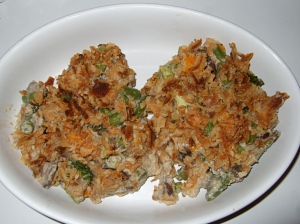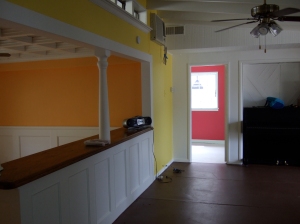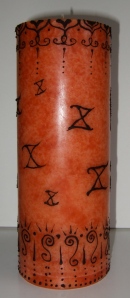EFT stands for Emotional Freedom Technique. The most concise description I know of is emotional acupressure. It is based on tapping the meridian endpoints (used in acupuncture and acupressure) with one’s fingertips.
It falls into the general category of Energy Medicine, an emerging field. There’s already lots of research to back up the results, for those who are into that.
I have used this technique for over ten years with great success on everything imaginable. I have used it twice to cure a UTI overnight. I have used it for pain relief, when I can’t sleep, when I’m upset, scared, to dump old emotional baggage. I have used it to help my pets–to ease their pain, to end overeating leading to being overweight. People ask me about it frequently and how to learn it, so i created this post.
Developed originally by Gary Craig, who created and maintained http://www.emofree.com for many years and created the first certification program, many other gifted healers have taken it up and expanded upon his foundation.
Here are my favorite web sites to learn and practice EFT and other types of tapping. They are all loaded with resources. Many of them send out informative newsletters.
• http://www.thetappingsolution.com/how-to-tap.php
Nick and Jessica Ortner have made a documentary with the same title. They offer a free video which shows the basic tapping points and how to do, as well as videos and audios to tap along with if you’re not sure what words you’d like to use. They also offer a monthly club membership site.
• http://www.eftdownunder.com/
Steve Wells and David Lake, down under in Australia, started with EFT tapping and developed their own simpler version of tapping on the fingertips only, called SET tapping. They have done numerous studies and offer workshops all over the world. The most important thing I think they have discovered is that it doesn’t matter what points you remember or using them in order, etc. Any tapping on the meridian endpoints offers benefits. They wrote a book for kids to learn to tap also.
• www.caroltuttle.com (http://www.caroltuttle.com/aboutenergy.asp)
Carol Tuttle is another pioneer in this field. She offers among many things a membership site that you can try for 3 days for $3.95 with videos you can tap along to. Her genius is in knowing what words and expressions bring the most healing quickly. She’s one of the most gifted people out there in this respect. I also like her Energy Profiling system. It has also brought me peace and understanding.
• http://www.attractingabundance.com/
Again, Carol Look is a pioneer and leader in this field. I’ve seen videos of her tapping with people who been in physical pain for decades and get some relief for the first time with tapping. She offers numerous products and classes.
• http://www.bradyates.net/
Brad Yates has many youtube videos posted–just click the button in the top right corner of his web site home page. He’s very funny (I call him the Stephen Colbert of tapping) and an excellent healer. You can tap along with his videos. He also has a book for kids to learn how to tap.
• http://www.mygenie.tv/
I love the energy of David Childerley–and also good if you enjoy a British accent! My favorite video of his is this one about money. Great statements to use no matter where you stand financially:
http://www.youtube.com/watch?v=YdZOpbb7HzA
After so many years of tapping these are my favorites, but there are many gifted practitioners out there who can get you started. Most important is to go with who you are drawn to, with whom you most resonate.
If you find the basic tapping points around the face and upper body too weird or silly or want points to use casually in public, then try the fingertip points using the SET method at eftdownunder, and “karate chop point” along the outside of the hand. There are also points about halfway down on the outer side of each thigh. You can tap these while you walk or during a meeting.
You can also try lightly pressing the tapping points and taking a deep breath at each one if you don’t want to or can’t tap. I’ve even read about people who have visualized tapping on themselves and gotten the results they wanted.
An important tip: when you can, speak the tapping phrases out loud as you tap. This usually brings about a quicker result, especially in areas that we feel really stuck. If you are dealing with an emotional topic, express that emotion as you speak. If you are releasing a traumatic incident, play the movie of it in your head and stop to tap on each part of it that bothers you.
Some people, like myself, have had great success learning and doing it on their own, and others prefer to work with someone or purchase an audio or DVD to follow along. Whatever you do, try some tapping. In the words of the Ortners, “try it on everything.”
– Katy DeBra










